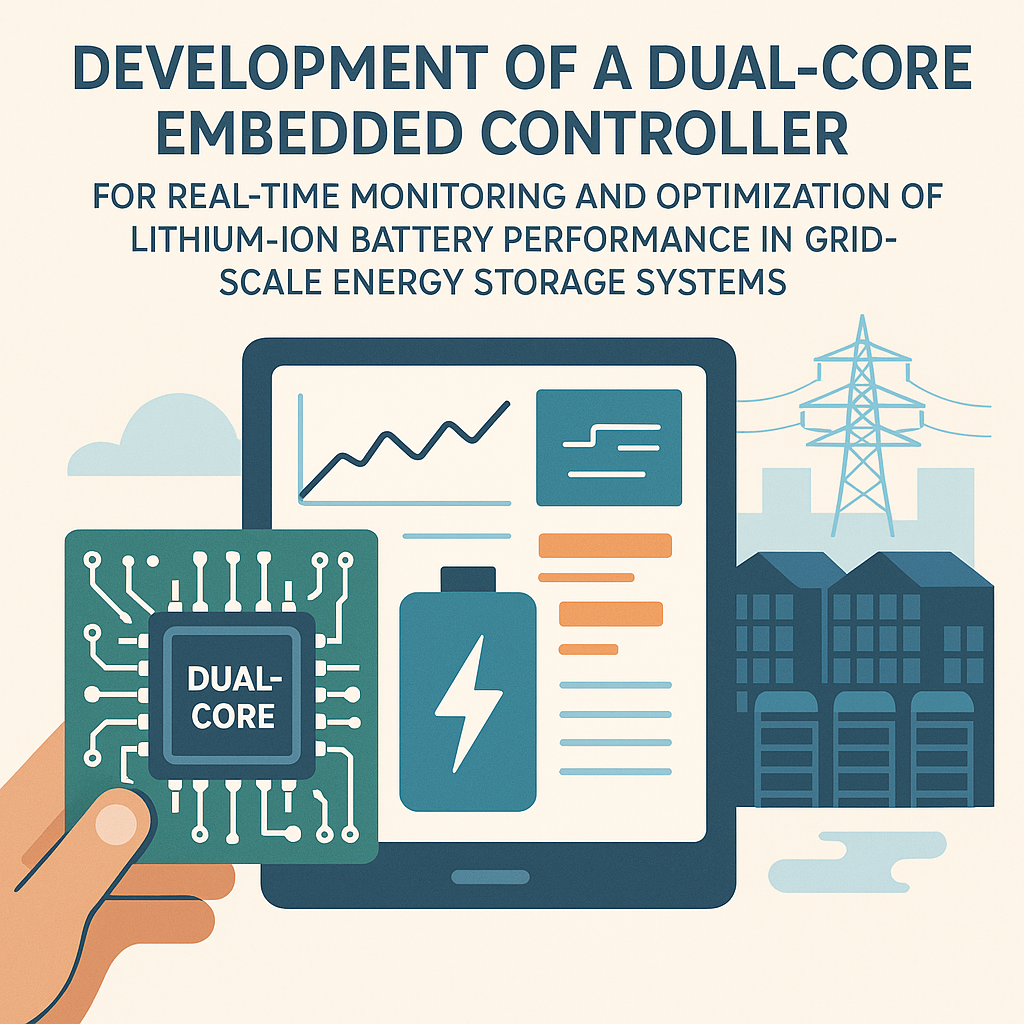Introduction
In recent years, the demand for efficient energy storage solutions has grown tremendously, particularly with the rise of renewable energy sources such as solar and wind. Lithium-ion batteries have emerged as a leading technology for grid-scale energy storage due to their high energy density, efficiency, and longevity. However, to maximize their performance and lifespan, effective monitoring and optimization strategies are essential. This blog post explores the development of a dual-core embedded controller designed specifically for real-time monitoring and optimization of lithium-ion battery performance in grid-scale energy storage systems.
Understanding Lithium-Ion Batteries
Lithium-ion batteries are composed of multiple cells that store and release energy through electrochemical reactions. Their performance can be influenced by several factors, including:
- Temperature: Affects chemical reactions and can lead to thermal runaway if not managed properly.
- State of Charge (SoC): Indicates how much charge the battery can hold, impacting its efficiency.
- State of Health (SoH): Reflects the battery’s condition and its ability to deliver expected performance over time.
To address these challenges, a sophisticated embedded controller is necessary to monitor these parameters continuously and optimize battery operation.
Why a Dual-Core Embedded Controller?
A dual-core embedded controller offers several advantages in the context of real-time monitoring and optimization:
- Parallel Processing: With two cores, the controller can handle multiple tasks simultaneously, such as data acquisition and processing.
- Real-Time Performance: Dual-core architecture allows for timely responses to changes in battery performance, enhancing safety and efficiency.
- Redundancy: In case one core fails, the other can take over, ensuring continuous operation and reliability.
Key Features of the Dual-Core Embedded Controller
The development of the dual-core embedded controller includes several key features tailored for lithium-ion battery monitoring and optimization:
- Real-Time Data Monitoring: Continuous tracking of temperature, SoC, and SoH to ensure optimal battery operation.
- Advanced Algorithms: Implementation of predictive algorithms to forecast battery performance and optimize charging/discharging cycles.
- Communication Protocols: Integration of communication standards such as CAN, Modbus, or Ethernet for seamless data sharing with other system components.
- User Interface: A user-friendly interface for operators to visualize battery performance metrics and receive alerts for maintenance.
Development Process
The development of the dual-core embedded controller involves several critical steps:
- Requirements Analysis: Identifying the specific needs of grid-scale energy storage systems and defining performance metrics.
- Hardware Design: Selecting appropriate microcontrollers, sensors, and communication interfaces to create a robust system.
- Software Development: Coding the embedded software to implement real-time data monitoring and optimization algorithms.
- Testing and Validation: Conducting rigorous testing to ensure the system performs reliably under various conditions.
Challenges in Development
While developing a dual-core embedded controller, several challenges must be addressed:
- Power Management: Ensuring the controller operates efficiently without draining battery resources.
- Data Integrity: Maintaining accurate and reliable data from sensors to make informed decisions.
- Scalability: Designing the controller to accommodate future expansions in battery systems or additional features.
Real-World Applications
The dual-core embedded controller can be utilized in various real-world applications, including:
- Renewable Energy Integration: Enhancing the stability and efficiency of energy storage systems connected to solar and wind farms.
- Grid Stabilization: Providing backup power and supporting grid frequency regulation through dynamic energy dispatch.
- Electric Vehicle Charging Stations: Optimizing battery usage to manage peak loads and reduce operational costs.
Conclusion
The development of a dual-core embedded controller for lithium-ion battery performance monitoring and optimization represents a significant advancement in grid-scale energy storage technology. By leveraging the capabilities of dual-core architecture, this controller can enhance the efficiency, reliability, and lifespan of lithium-ion batteries. As the demand for sustainable energy solutions continues to rise, innovations like this will play a crucial role in transforming energy systems worldwide.



